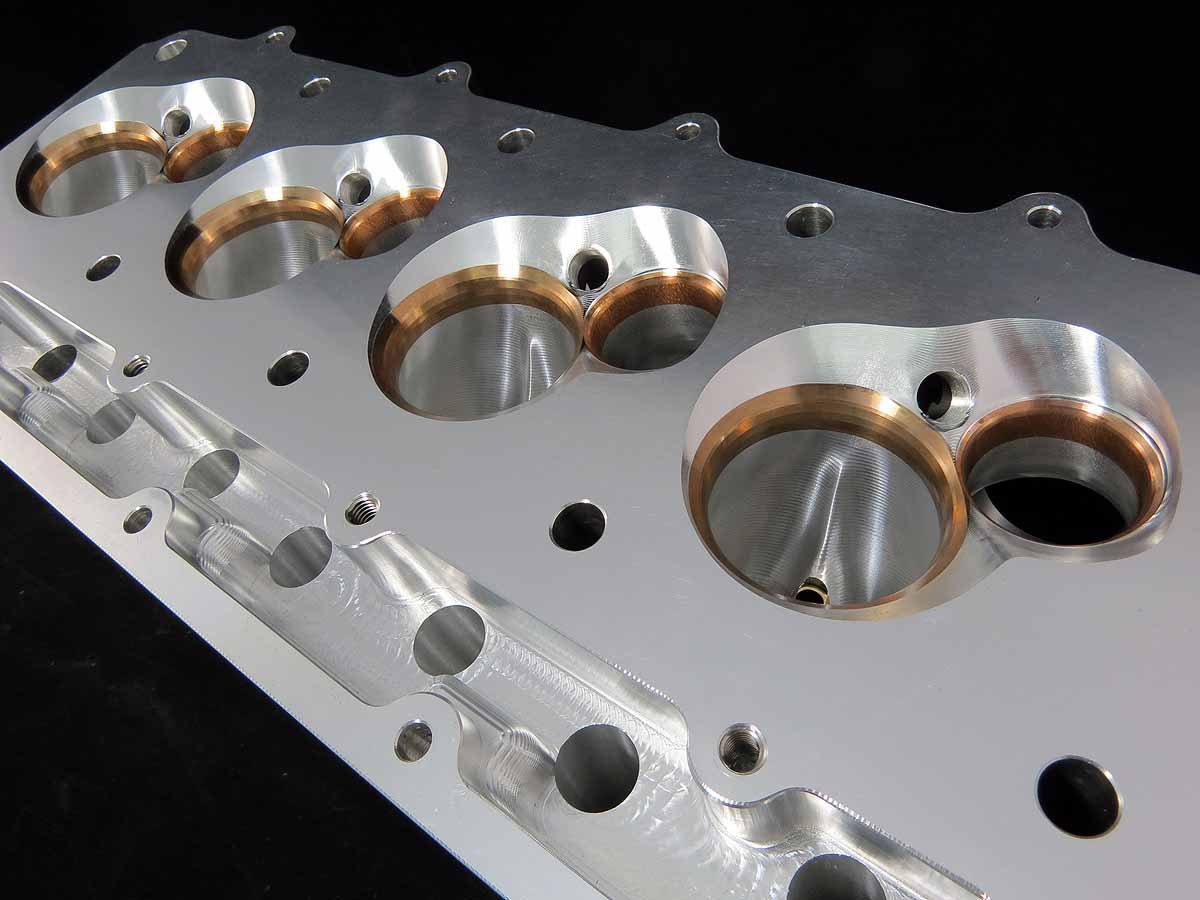The introduction of the Gen III Chevy small block engine by GM Motors was a stupendous breakthrough in the industry. Despite the official nomenclature of ‘Gen III Chevy’ the engine gained popularity as an LS engine and left its mark in the motor vehicle industry with indelible ink.
The LS1 engine and the subsequent engines in the series earned their reputation in the industry for their power and dependability. Let us see what made the LS cylinder heads so different from the engine heads of the past that they are still a topic of discussion even after 2.5 decades after their introduction.
What is the Role of a Cylinder Head in a Car Engine?
A cylinder head is the upper part of a vehicle engine that sits atop the engine block and is responsible for closing the combustion chamber inside the engine. The cylinder heads have a metal body and are a little complicated with their various parts, including –
- Inlet and exhaust ducts
- Coolant passages
- Inlet and exhaust valve
- Camshafts
- Fuel Injectors
- Spark plugs
Understanding the LS Cylinder Heads
General Motors launched a cylinder head in 1996. This 5.7L Gen III small block engine head was way ahead of its time. This cylinder head had the RPO code LS1 and it became popular among the public with this very name.
The launch of the popularly called LS1 cylinder heads revolutionized the motor vehicle industry with its various features that made it the most powerful yet economical option.
The LS1 cylinder heads had an aluminum body and were lightweight. They featured 259 cc intake and 102 cc exhaust, runners. The combustion chamber was 72 cc. And, the valves were 2.165” and 1.600” respectively intake and exhaust valves.
The design of the LS1 cylinder heads also ensured their easy assembly. The engine head got popular as it was comparatively economical with a maximum output potential.
After the launch of LS1 i.e. Gen III small block all engine heads produced as Gen III Chevy small block and Gen IV Chevy small block retained popularity as LS engines. The different varieties of engines in this series include –
- LS1 cylinder heads
- LS2 cylinder heads
- LS3 cylinder heads
- LS4 cylinder heads
- LS5 cylinder heads
- LS6 cylinder heads
- LS7 cylinder heads, etc.
LS engines became a huge success in the market, thanks to their ever-evolving cylinder heads. Even the first LS engine gained so much popularity due to the different features of cylinder heads that made it significantly better than the competitors. One of the most important features of the cylinder head was its great airflow that allowed power leveling in the future. The four-bolt attachment pattern of the LS1 cylinder head was the key factor that freed up the ports thus maximizing the airflow.
Frequently Asked Questions
What does LS stand for?
LS as in LS heads and LS engines stands for Luxury Sport.
What LS head is the best?
Despite all the changes and developments, LS1 cylinder heads have not lost their charm to date. Though LS6 was a modified version of LS1 and it actually surpassed the performance of LS1 cylinder heads in many ways but they, unfortunately, went out of production.
Which LS head makes the most power?
The factory version of LS3 and LS7 provides exceptional power potential. But, the CNC-ported aftermarket heads may allow even more power output. One can utilize a flow bench to determine the power potential of a set of LS cylinder heads. Alternatively, they can also be run on a dyno for exact estimation of power output.
What makes LS engines so great?
The reason behind the long-term popularity of LS engines is that they are compact and lightweight and at the same time have an exceptional power output.
What is the cheapest LS engine to build?
The readily available and lowest-priced LS engines are the 4.8l and 5.3l versions. These are found in Chevy/ GMC trucks and SUVs built between 1999 and 2003.
On which engine did the 243 LS head come?
The popular 243-cylinder head came on the powerful LS6 engines that were produced between 2001 and 2006.
Do all LS engines have an aluminum body?
No. When we talk about LS engines, we are actually talking about two things – engine block and engine head. While LS engine blocks are made of either aluminum or cast iron LS engine cylinder heads are made of aluminum with an exception. The widely known exception is the early LQ4 engines that did not have aluminum cylinder heads.
What fuel pump will I need for the LS swap?
For your LS swap need, an in-tank electric fuel pump will be required.





























